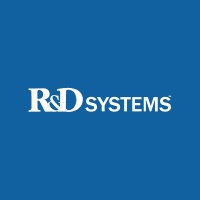CD186 Monoclonal / Alexa Fluor 594 / 56811R
Product Details
| Description | Human CXCR6 Alexa Fluor 594-conjugated Antibody | |
|---|---|---|
| Conjugate | Alexa Fluor 594 | |
| Clone | 56811R | |
| Target Species | Human | |
| Applications | FC | |
| Supplier | R&D Systems | |
| Catalog # | Sign in to view product details, citations, and spectra | |
| Size | ||
| Price | ||
| Antigen | ||
| Host | ||
| Isotype |
About CD186
The protein encoded by this gene is a G protein-coupled receptor with seven transmembrane domains that belongs to the CXC chemokine receptor family. This family also includes CXCR1, CXCR2, CXCR3, CXCR4, CXCR5, and CXCR7. This gene, which maps to the chemokine receptor gene cluster, is expressed in several T lymphocyte subsets and bone marrow stromal cells. The encoded protein and its exclusive ligand, chemokine ligand 16 (CCL16), are part of a signalling pathway that regulates T lymphocyte migration to various peripheral tissues (the liver, spleen red pulp, intestine, lungs, and skin) and promotes cell-cell interaction with dendritic cells and fibroblastic reticular cells. CXCR6/CCL16 also controls the localization of resident memory T lymphocytes to different compartments of the lung and maintains airway resident memory T lymphocytes, which are an important first line of defense against respiratory pathogens. The encoded protein serves as an entry coreceptor used by HIV-1 and SIV to enter target cells, in conjunction with CD4. [provided by RefSeq, Aug 2020]
The protein encoded by this gene is a G protein-coupled receptor with seven transmembrane domains that belongs to the CXC chemokine receptor family. This family also includes CXCR1, CXCR2, CXCR3, CXCR4, CXCR5, and CXCR7. This gene, which maps to the chemokine receptor gene cluster, is expressed in several T lymphocyte subsets and bone marrow stromal cells. The encoded protein and its exclusive ligand, chemokine ligand 16 (CCL16), are part of a signalling pathway that regulates T lymphocyte migration to various peripheral tissues (the liver, spleen red pulp, intestine, lungs, and skin) and promotes cell-cell interaction with dendritic cells and fibroblastic reticular cells. CXCR6/CCL16 also controls the localization of resident memory T lymphocytes to different compartments of the lung and maintains airway resident memory T lymphocytes, which are an important first line of defense against respiratory pathogens. The encoded protein serves as an entry coreceptor used by HIV-1 and SIV to enter target cells, in conjunction with CD4. [provided by RefSeq, Aug 2020]
About Alexa Fluor 594
Alexa Fluor™ 594 (AF594, Alexa 594) has an excitation peak at 590 nm and an emission peak at 617 nm, and is spectrally similar to Texas Red (ThermoFisher Scientific), DyLight™ 594 (ThermoFisher Scientific), iFluor® 594 (ATT Bioquest) and iFluor® 610 (ATT Bioquest), CF®594 (Biotium), and ATTO 594 (ATTO-TEC). Alexa 594 is commonly used for flow cytometry,fluorescence microscopy and super-resolution microscopy. It is very bright, photostable, and pH insensitive.
Alexa Fluor™ 594 (AF594, Alexa 594) has an excitation peak at 590 nm and an emission peak at 617 nm, and is spectrally similar to Texas Red (ThermoFisher Scientific), DyLight™ 594 (ThermoFisher Scientific), iFluor® 594 (ATT Bioquest) and iFluor® 610 (ATT Bioquest), CF®594 (Biotium), and ATTO 594 (ATTO-TEC). Alexa 594 is commonly used for flow cytometry,fluorescence microscopy and super-resolution microscopy. It is very bright, photostable, and pH insensitive.
Experiment Design Tools
Panel Builders
Looking to design a Microscopy or Flow Cytometry experiment?
Validation References
Reviews & Ratings
| Reviews |
|---|
Looking for more options?
503 CD186 antibodies from over 26 suppliers available with over 61 conjugates.





